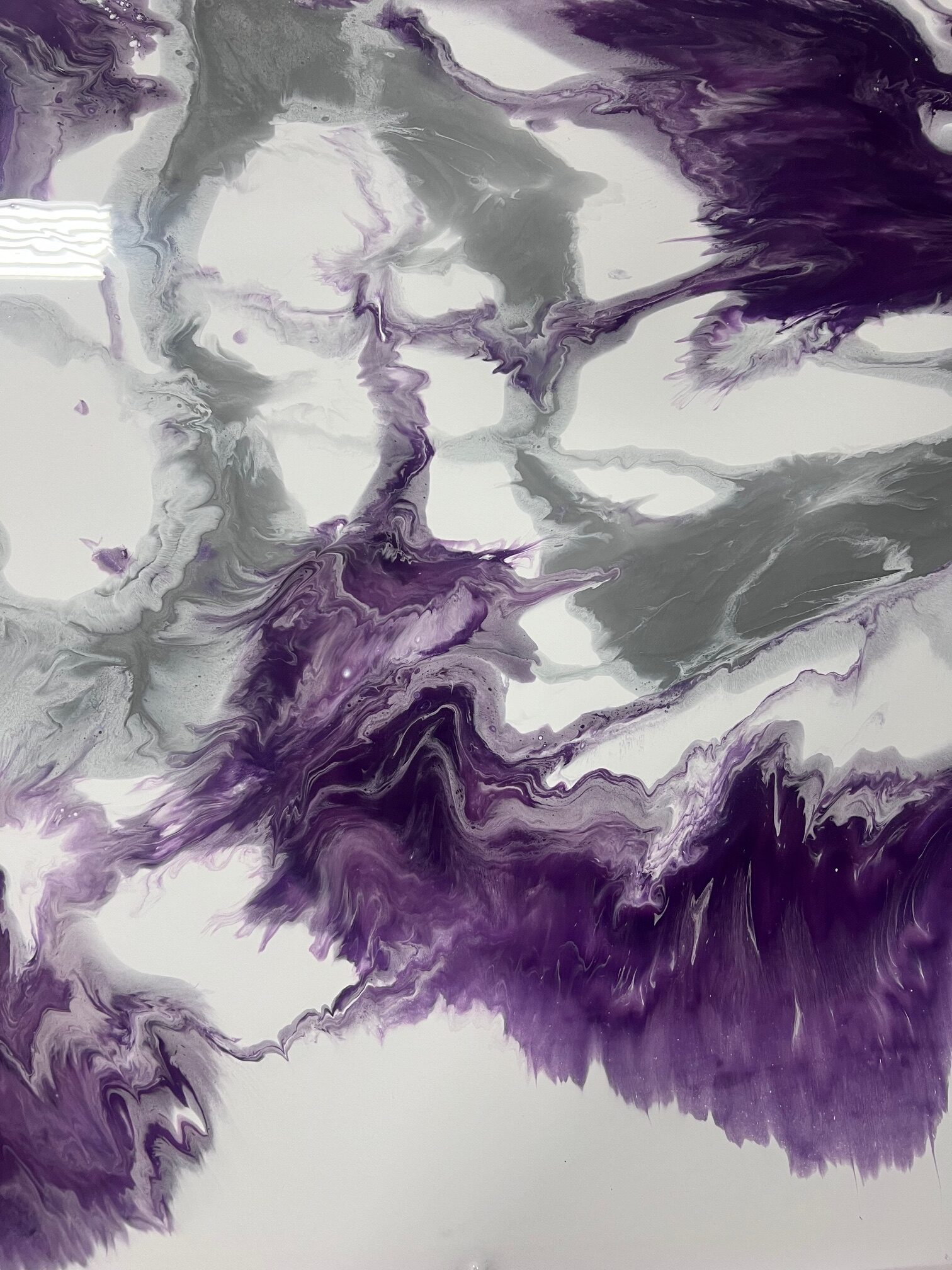What Are the Best Concrete Patio Coatings? A Guide For Your Next Project
A well-coated concrete patio boosts property value and withstands wear.
Exposure to weather, foot traffic, and wear can deteriorate concrete surfaces over time.
The best options include polyaspartic coatings for long-lasting protection, epoxy for a smooth finish, stamped overlays for a decorative touch, and acrylic sealers for affordability. Each has its pros and cons, and selecting the right one depends on your needs, climate, and budget.
Why Professional Concrete Patio Coatings Matter
A quality coating does more than just improve the look of a patio. Contractors who apply the right concrete patio coatings ensure long-term durability and client satisfaction. Here’s what a proper concrete coating provides:
- Durability: Prevents cracking, staining, and wear.
- Aesthetic Appeal: Custom finishes, colors, and textures to match any design.
- UV Protection: Reduces fading in sun-exposed areas.
- Slip Resistance: Adds safety for patios near pools or in wet climates.
- Weather & Chemical Resistance: Protects against moisture, chemicals, and temperature fluctuations.
5 Key Factors When Selecting a Concrete Coating for Patios
Contractors should consider these critical factors when choosing a patio coating:
1. Traffic & Usage: Patios experience different levels of foot traffic depending on their intended use. If the space is frequently used for entertaining guests, dining, or social gatherings, a more durable coating like epoxy or polyaspartic is recommended.
2. Climate & Weather Conditions: Patios exposed to extreme weather conditions require coatings that can withstand moisture, UV exposure, and temperature changes. Polyaspartic and polyurethane coatings offer superior weather resistance.
3. Aesthetic Preferences: Coatings come in various finishes, from matte to high-gloss, and in multiple color options. Some coatings also allow decorative enhancements like vinyl chips or metallic pigments for a unique look.
4. Slip Resistance: Essential for wet environments; anti-slip additives improve safety.
5. Ease of Application & Curing Time: Contractors often use quick-curing concrete coatings supply to meet project deadlines. Polyaspartic coatings dry much faster than epoxy, allowing patios to be used sooner.
Concrete Coatings Comparison: What Works Best for Patios?
Each coating has unique benefits depending on the project’s needs. Here’s a breakdown of the top choices:
1. Epoxy Coatings: Durable & High-Gloss
Epoxy concrete coatings are a popular choice for patio surfaces due to their durability and protective properties. This two-part resin system forms a thick, glossy layer that withstands wear and tear.
Best for: Moderate to heavy foot traffic, high-gloss finishes.
- Metallic Floor Coatings
Epoxy Coatings
Pros:
- Extremely durable and resistant to abrasions.
- High-gloss finish enhances the patio’s aesthetic appeal.
- Resistant to stains from food, grease, and chemicals.
- Provides a moisture-resistant barrier.
Cons:
- It can be slippery unless anti-slip additives are used.
- Prone to yellowing when exposed to prolonged sunlight.
- Takes longer to cure compared to polyaspartic coatings.
2. Polyaspartic Coatings: Fast-Drying and UV Stable
Polyaspartic coatings are a top choice for contractors who need fast-curing, long-lasting protection for patios. Unlike epoxy, which can take days to fully cure, polyaspartic coatings dry within a few hours, allowing projects to be completed quickly with minimal downtime.
High-end homes and commercial spaces need polyaspartic coatings for durability and UV stability.
With their superior resistance to yellowing, stains, and abrasions, polyaspartic coatings maintain their appearance and structural integrity even in harsh climates.
Best for: High-traffic areas, patios exposed to sunlight.
Pros:
- Dries and cures quickly, reducing project downtime.
- Offers superior UV protection to prevent yellowing or fading.
- Highly resistant to stains, abrasions, and moisture.
- The advantage of polyaspartic vs. epoxy is that polyaspartic allows better resistance to cracking.
Cons:
- Higher cost than epoxy.
- Requires proper application techniques for best results.
3. Acrylic Sealers: Cost-Effective and Easy to Apply
Acrylic sealers offer an affordable and practical solution for patios needing basic protection and aesthetic enhancement. These coatings are ideal for homeowners who want a quick, budget-friendly upgrade without compromising on UV protection or finish options. Unlike epoxy or polyaspartic coatings, acrylic sealers are easier to apply, making them a go-to choice for DIY enthusiasts and contractors handling large-scale residential projects.
Best for: Homeowners looking for an economical yet effective patio coating.
Here, one of our contractors from HP Concrete Coatings transformed a client’s weathered patio with Microguard Adsil. They revitalized the surface with improved UV resistance and a fresh, modern finish, without the high cost of premium coatings.
Pros:
- Affordable compared to other coatings.
- Simple to apply, saving time and labor costs.
- Provides UV protection to reduce fading.
- Available in both glossy and matte finishes.
Cons:
- Less durable than epoxy or polyaspartic coatings.
- Requires reapplication every few years.
- Limited protection against heavy wear and chemical exposure.
4. Polyurethane Coatings: Flexible and Resilient
Polyurethane coatings are highly flexible and durable, making them an excellent choice for patios in areas with fluctuating temperatures. Many ski resorts use polyurethane coatings due to extreme freeze-thaw conditions.
Best for: Extreme weather conditions, patios needing flexibility.
Pros:
- Excellent UV resistance, preventing fading.
- Highly resistant to scratches, stains, and chemicals.
- More flexible than epoxy, reducing the risk of cracking.
- Available in various finishes, from satin to high gloss.
Cons:
- More expensive than acrylic sealers.
- Requires careful application to achieve optimal results.
How to Maintain a Concrete-Coated Patio
To maximize the lifespan of coated patios, follow these maintenance steps:
- Regular Cleaning: Sweep and wash the patio periodically to remove dirt and debris.
- Avoid Harsh Chemicals: Use mild detergents instead of abrasive cleaners to prevent damage.
- Reapply Sealers as Needed: Some coatings require reapplication every few years to maintain their protective properties.
- Protect High-Traffic Areas: Use furniture pads and rugs to reduce wear and tear in busy areas.

Client Review
Frequently Asked Questions on Concrete Patio Coatings
1. What is the most durable concrete coating for patios?
Polyaspartic coatings are among the most durable options for patios. They offer superior resistance to UV rays, abrasions, and chemical spills, making them ideal for high-traffic areas. Epoxy is another durable choice, but it is more prone to yellowing in sunlight unless a UV-stable polyaspartic topcoat is applied.
2. How long does concrete patio coatings last?
The lifespan of a concrete coating depends on the type of concrete coating, environmental conditions, and maintenance.
- Epoxy coatings last 5-10 years with proper care.
- Polyaspartic coatings can last 10-15 years due to their superior durability and UV resistance.
- Acrylic sealers may need reapplication every 1-3 years, depending on foot traffic and weather exposure.
3. How do I prevent a patio coating from peeling or bubbling?
- Ensure the concrete is clean, dry, and free of oil, dirt, or grease.
- Mechanically profile the surface (e.g., grinding or shot blasting) to improve adhesion.
- Use the appropriate primer if required.
- Weather conditions affect your concrete floor coatings. Avoid applying coatings in humid or extreme temperature conditions, which can cause moisture entrapment and bubbling.
4. Can I apply new concrete patio coatings over an old one?
Yes, but it depends on the existing coating’s condition.
- If the old coating is damaged, peeling, or flaking, it must be removed before applying a new one.
- If the coating is in good condition, light sanding or mechanical abrasion will help the new coating bond properly.
5. What is the fastest-curing patio coating for contractors?
Polyaspartic coatings are the fastest-curing option, allowing foot traffic in as little as 4-6 hours. This makes them ideal for projects that require quick turnaround times.
Choosing the Best Concrete Coating for Your Patio
Every patio project is unique, and selecting the right concrete coating depends on durability, climate, traffic levels, and budget.
- For durability: You may choose polyaspartic or epoxy.
- For quick curing: Polyaspartic is the top choice.
- For affordability: Go with acrylic sealers.
- For extreme climates: Polyurethane is best.
To learn more about premium concrete patio coatings and how they can improve efficiency in your projects, contact our team at 833-663-4255.
- How Long Does Concrete Coating Last, and How Do You Maintain It? - October 8, 2025
- How Weather Conditions Affect Concrete Floor Coatings: Durability and Best Practices - October 6, 2025
- Polyaspartic Garage Floor Coatings: How Fast Is the Installation Process? - October 1, 2025



